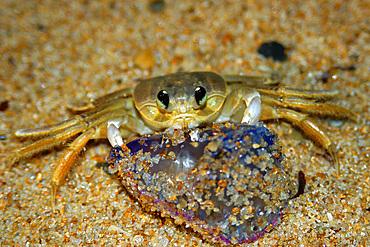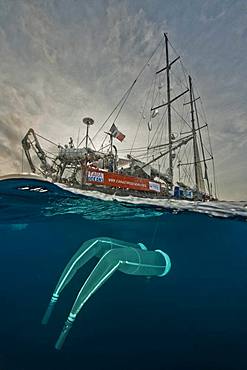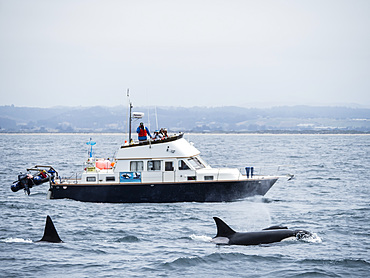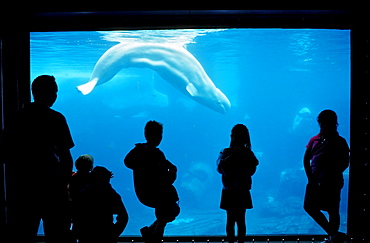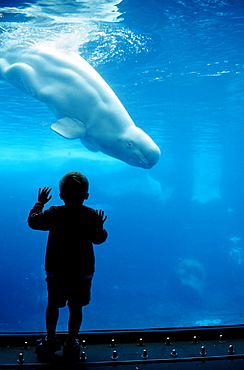Recent searches
Loading...
1116-52095 - The long expanse of the iconic Scripps Pier in the Pacific Ocean near San Diego on a grey day; La Jolla, San Diego County, California, United States of America
1116-52096 - Stormy sky and the repeating view of the cement columns under the iconic Scripps Pier in the Pacific Ocean near San Diego; La Jolla, San Diego County, California, United States of America
1350-2316 - Crab preying on dead portuguese man-of-war, Physalia physalis, Praia do Forte, Bahia, Brazil (South Atlantic)
1116-49672 - A research diver from the MOC Marine Institute glues broken coral back together at Molokini Marine Preserve off the island of Maui, Hawaii. The coral is tagged and will be monitored, Maui, Hawaii, United States of America
1116-49671 - Research divers from the MOC Marine Institute map out coral damage at Molokini Marine Preserve off the island of Maui, Hawaii. In the future, data from here will help to determine the health of Hawaii's reefs, Maui, Hawaii, United States of America
1116-49673 - Research divers from the MOC Marine Institute glue broken coral heads back together and map out coral damage at Molokini Marine Preserve off the island of Maui, Hawaii. In the future, data from here will help to determine the health of Hawaii's reefs, Maui, Hawaii, United States of America
860-287450 - Tara Oceans Expeditions - May 2011. Tara with deployed plancton nets. On "station", the boat is drifting without engine or sails. Tara Oceans, a unique expedition: Tara Oceans is the very first attempt to make a global study of marine plankton, a form of sea life that includes organisms as small as viruses and bacterias, and as big as medusas. Our goal is to better understand planktonic ecosystems by exploring the countless species, learning about interactions among them and with their environment. Marine plankton is the only ecosystem that is almost continuous over the surface of the Earth. Studying plankton is like taking the pulse of our planet. Recently, scientists have discovered the great importance of plankton for the climate: populations of plankton are affected very rapidly by variations in climate. But in turn they can influence the climate by modifying the absorption of carbon. In a context of rapid physico-chemical changes, for example the acidification observed today in the world's oceans, it is urgent to understand and predict the evolution of these particular ecosystems. Finally, plankton is an astonishing way of going back in time ? a prime source of fossils. Over the eons, plankton has created several hundred meters of sediment on the ocean floors. This allows us to go back in time, to the first oceans on Earth, and better understand the history of our biosphere. More than 12 fields of research are involved in the project, which will bring together an international team of oceanographers, ecologists, biologists, geneticists, and physicists from prestigious laboratories headed by Eric Karsenti of the European Molecular Biology Laboratory. Galapagos
1112-4206 - Adult killer whales (Orcinus orca) near research boat in the Monterey Bay National Marine Sanctuary, California, United States of America, North America
832-370502 - German research icebreaker Polarstern, operated by the Alfred Wegener Institute for Polar and Marine Research, Isfjorden, Spitsbergen, Svalbard, Norway, Europe
465-3251 - Biologist taking skin sample from a whale shark to determine what plankton types the animal has been feeding on, Yum Balam Marine Protected Area, Quintana Roo, Mexico, North America
465-3246 - Scientist free diving to make a photo identification of an individual manta ray (Manta birostris), Yum Balam Marine Protected Area, Quintana Roo, Mexico, North America
1113-84093 - Beluga whale in seen through window, Delphinapterus leucas, USA, California, San Diego, SeaWorld
1113-84094 - Child looking at Beluga whale, Delphinapterus leucas, USA, California, San Diego, SeaWorld
1113-78579 - Beluga whales in the arctic house in L'Oceanografic, Valencia, Spain
1113-78577 - entrance L'Oceanografic, architect Felix Candela, Valencia, Spain
1113-78584 - underwater tunnel, sharks, L'Oceanografic, Valencia, Spain
1113-78583 - underwater tunnel, sharks, L'Oceanografic, Valencia, Spain
1113-78586 - underwater tunnel, sharks, L'Oceanografic, Valencia, Spain
857-32785 - Jennifer Carroll, oyster hatchery manager and researcher at Center of Marine Biotechnology, Baltimore MD.She is holding a diploid Asian oyster C. ariakensis in the "algae kitchen" in the biosecure laboratory. She is studying reproduction to determine whether to introduce into the bay.
857-32630 - At the Center of Marine Biotechnology, Baltimore MD Yohan Zohar holds a female sponge blue crab and takes a biopsy of embryos. One female can give up to 3 million embryos.
978-440 - Giant Manta at Cleaning station being cleaned by butterfly fish. Pacific Ocean, Ecuador
978-423 - Black Manta birostris with remora. Pacific Ocean, Ecuador
978-425 - Research diver approaching manta birostris to record detail in research program, Project Elasmo. Pacific Ocean, Ecuador
978-422 - Black Manta birostris with remora. Pacific Ocean, Ecuador
978-434 - Green Sea Turtle (Chelonia mydas) near to the surface. Machalilla National Park, Ecuador. Pacific Ocean, Ecuador
978-444 - Giant manta ray, Isla de la Plata Ecuador. Portrait shot of Manta birostris approaching camera. Pacific Ocean, Ecuador
978-430 - Research diver approaching manta birostris to record detail in research program, Project Elasmo. Pacific Ocean, Ecuador
978-441 - Giant manta ray, Isla de la Plata Ecuador. Portrait shot of Manta birostris approaching camera. Pacific Ocean, Ecuador
978-438 - Green Sea Turtle (Chelonia mydas) near to the surface. Machalilla National Park, Ecuador. Pacific Ocean, Ecuador
978-432 - Research diver approaching manta birostris to record detail in research program, Project Elasmo. Pacific Ocean, Ecuador
978-445 - Manta Birostris swimming at surface, Pacific Ocean, Ecuador. Pacific Ocean, Ecuador
1074-15 - Sperm whale (Physeter macrocephalus / catodon) washed up dead with man standing by head for scale. North coast of Iceland.
978-443 - Manta Birostris swimming at surface, Pacific Ocean, Ecuador. Pacific Ocean, Ecuador
978-442 - Manta Birostris swimming at surface, Pacific Ocean, Ecuador. Pacific Ocean, Ecuador
978-431 - Giant manta ray, Isla de la Plata Ecuador. Portrait shot of Manta birostris approaching camera. Pacific Ocean, Ecuador
978-418 - Research diver approaching manta birostris to record detail in research program, Project Elasmo. Pacific Ocean, Ecuador
978-439 - Green Sea Turtle (Chelonia mydas) and Giant Manta Ray (manta birostris). Pacific Ocean, Ecuador
978-420 - Research diver approaching manta birostris to record detail in research program, Project Elasmo. Pacific Ocean, Ecuador
978-426 - Research diver approaching manta birostris to record detail in research program, Project Elasmo. Pacific Ocean, Ecuador
978-428 - Satellite Tag attached to Giant Manta Ray, Ecuador. The lines to the left indicate recent fishing damage. Pacific Ocean, Ecuador
978-435 - Mobula species Isla de la Plata, Ecuador, Machalilla National Park. Pacific Ocean, Ecuador
978-446 - Giant manta ray, Isla de la Plata Ecuador. Portrait shot of Manta birostris approaching camera. Pacific Ocean, Ecuador
978-447 - Research diver approaching manta birostris to record detail in research program, Project Elasmo. Pacific Ocean, Ecuador
978-429 - Research diver approaching manta birostris to record detail in research program, Project Elasmo. Pacific Ocean, Ecuador
978-419 - Research diver approaching manta birostris to record detail in research program, Project Elasmo. Pacific Ocean, Ecuador
978-433 - Research diver approaching manta birostris to record detail in research program, Project Elasmo. Pacific Ocean, Ecuador
978-427 - Research diver approaching manta birostris to record detail in research program, Project Elasmo. Pacific Ocean, Ecuador
978-424 - Research diver approaching manta birostris to record detail in research program, Project Elasmo. Pacific Ocean, Ecuador
978-437 - Green Sea Turtle (Chelonia mydas) near to the surface. Machalilla National Park, Ecuador. Pacific Ocean, Ecuador
978-436 - Green Sea Turtle (Chelonia mydas) near to the surface. Machalilla National Park, Ecuador. Pacific Ocean, Ecuador
978-421 - Research diver approaching manta birostris to record detail in research program, Project Elasmo. Pacific Ocean, Ecuador
1036-186 - Green turtle (Chelonia mydas) hatchlings being rescued from a damaged nest. Bird Island, Seychelles, Indian Ocean (RR)
1036-211 - Research yacht, Song of the Whale, working offshore. Middle of North Atlantic
1036-208 - New Zealand Whale and Dolphin Trust working with Hectors dolphins (Cephalorhynchus hectori) Akaroa, South Island: New Zealand.
1036-185 - Green turtle (Chelonia mydas) hatchlings being rescued from a damaged nest. Bird Island, Seychelles, Indian Ocean (RR)
1036-210 - Aerial shot of the research yacht, The Song of the Whale, being investigated by a Minke whale (Balaenoptera acutorostrata), while one of the crew tries to get a closer look fro
1036-209 - Research yacht monitoring Killer whale (Orcinus orca) activity during the winter months in the fjords of northern Norway. Tysjford, Norway.
1036-207 - New Zealand Whale and Dolphin Trust working with Hector's dolphins (Cephalorhynchus hectori)
1036-187 - Tourist on Bird Island working with resident warden to rescue Green turtle (Chelonia mydas) hatchlings from damaged nests. Seychelles, Indian Ocean (RR)
1036-184 - Green turtle (Chelonia mydas) hatchlings being rescued from damaged nest with floods expected. Bird Island, Seychelles, Indian Ocean (RR)
1034-19 - orca/ killer whale (Orcinus orca) 'Luna' (L98), 5-year old lone male interacting with people's feet in Nootka Sound, West Vancouver Island, Canada, North Pacific.
1034-21 - orca/ killer whale (Orcinus orca) 'Luna' (L98), 5-year old lone male interacting with Ed Thornburn in Nootka Sound, West Vancouver Island, Canada, North Pacific.
1034-18 - orca/ killer whale (Orcinus orca) 'Luna' (L98), 5-year old lone male interacting with Ingrid Visser (photo by T. Hardie) in Nootka Sound, West Vancouver Island, Canada, North Pacific.
969-159 - Cuvier's Beaked Whale (Ziphiius cavirostris) rescue in Horta Harbour. Azores
969-160 - Cuvier's Beaked Whale (Ziphiius cavirostris) rescue in Horta Harbour. Azores
969-206 - Loggerhead Turtle (Caretta caretta) being captured for tagging project. Azores
969-207 - Loggerhead Turtle (Caretta caretta) with flipper tag. Azores
969-208 - Loggerhead Turtle (Caretta caretta) being measured prior to tagging. Azores
969-209 - Loggerhead Turtle (Caretta caretta) juvenile with goose barnacles (Pollicipes polymerus). Azores
979-2067 - Pelagic crab (Pleuroncodes planipes) caught in glass with curious boy off the Baja Peninsula, Mexico. This crab is often called the red tuna crab.
979-2052 - CT measures (9'8") the lower right mandible (jawbone) of an adult bull Sperm Whale (Physeter macrocephalus) in the mid-riff region of the Gulf of California (Sea of Cortez), Mexico. Model released.
979-2068 - Three species of barnacles, Coronula diadema, Cryptolepas rhachianecti, Conchoderma testudini
979-2524 - The Lindblad Expedition ship MS Endeavour in Paradise Bay on the Antarctic Peninsula.
979-2340 - The National Geographic Endeavour breaking through ice floes in the Weddell Sea around the Antarctic Peninsula. Guests are on the bow watching the process.
979-2296 - Hawaiian Spinner Dolphin (Stenella longirostris) pod with researcher inside Midway Atoll, NW Hawaiian Islands, USA. Pacific Ocean.
979-2612 - The National Geographic Endeavour at sunset in the Lemaire Channel near the Antarctic Peninsula.
979-2044 - Young California Sea Lion (Zalophus californianus) hauled out on a Zodiac surrounded by snorkelers in the Gulf of California (Sea of Cortez), Mexico.
920-2119 - False killer whale (Pseudorca crassidens) with sunscreen Marine Mammal Research Center, Hawaii Institute of Marine Biology, Oahu, Hawaii, United States of America, Pacific
920-1021 - Scalloped hammerhead shark pups (Sphyrna lewini), kept for research, Hawaii Institute of Marine Biology, Kaneohe, Oahu, Hawaii, United States of America, Pacific
920-1517 - Research scientist taking hook off hammerhead shark pup (Sphyrna lewini), Hawaii Institute of Marine Biology, Kaneohe, Oahu, Hawaii, United States of America, Pacific
920-1521 - Scalloped hammerhead shark pups (Sphyrna lewini), kept for research, Hawaii Institute of Marine Biology, Kaneohe, Oahu, Hawaii, United States of America, Pacific
920-2120 - Bottlenose dolphin (Tursiops truncatus) receives medical care from trainer, Marine mammal research center, Hawaii Institute of Marine Biology, Oahu, Hawaii, United States of America, Pacific
920-1017 - Scalloped hammerhead shark pups (Sphyrna lewini), kept for research, Hawaii Institute of Marine Biology, Kaneohe, Oahu, Hawaii, United States of America, Pacific
920-1525 - Scalloped hammerhead shark pups (Sphyrna lewini), kept for research, Hawaii Institute of Marine Biology, Kaneohe, Oahu, Hawaii, United States of America, Pacific
920-1522 - Scalloped hammerhead shark pups (Sphyrna lewini), kept for research, Hawaii Institute of Marine Biology, Kaneohe, Oahu, Hawaii, United States of America, Pacific
920-1020 - Scalloped hammerhead shark pups (Sphyrna lewini), kept for research, Hawaii Institute of Marine Biology, Kaneohe, Oahu, Hawaii, United States of America, Pacific
920-1491 - Scalloped hammerhead shark pup (Sphyrna lewini), kept for research, Hawaii Institute of Marine Biology, Kaneohe, Oahu, Hawaii, United States of America, Pacific
920-1490 - Scalloped hammerhead shark pup (Sphyrna lewini), kept for research, Hawaii Institute of Marine Biology, Kaneohe, Oahu, Hawaii, United States of America, Pacific
920-1516 - Research scientist Lori Davis holds hammerhead shark pup (Sphyrna lewini), Hawaii Institute of Marine Biology, Kaneohe, Oahu, Hawaii, United States of America, Pacific
920-1583 - Scalloped hammerhead shark pups (Sphyrna lewini), kept for research, Hawaii Institute of Marine Biology, Kaneohe, Oahu, Hawaii, United States of America, Pacific
920-1293 - Tiger shark pup (Galeocerdo cuvier) at Hawaii Institute of Marine Biology, Kaneohe Bay, Oahu, Hawaii, United States of America, Pacific
920-1018 - Scalloped hammerhead shark pups (Sphyrna lewini), kept for research, Hawaii Institute of Marine Biology, Kaneohe, Oahu, Hawaii, United States of America, Pacific
920-1519 - Tank with hundreds of tilapia (Oreochromis mossambicus), Hawaii Institute of Marine Biology, Kaneohe, Oahu, Hawaii, United States of America, Pacific
920-1294 - Tiger shark pup (Galeocerdo cuvier) at Hawaii Institute of Marine Biology, Kaneohe Bay, Oahu, Hawaii, United States of America, Pacific
920-1520 - Scalloped hammerhead shark pup (Sphyrna lewini), kept for research, Hawaii Institute of Marine Biology, Kaneohe, Oahu, Hawaii, United States of America, Pacific
920-1518 - Scientists and graduate student collecting hammerhead shark pups for research, Hawaii Institute of Marine Biology, Kaneohe, Oahu, Hawaii, United States of America, Pacific
920-1526 - Scalloped hammerhead shark pups (Sphyrna lewini), kept for research, Hawaii Institute of Marine Biology, Kaneohe, Oahu, Hawaii, United States of America, Pacific
920-1528 - Scalloped hammerhead shark pups (Sphyrna lewini), kept for research, Hawaii Institute of Marine Biology, Kaneohe, Oahu, Hawaii, United States of America, Pacific


